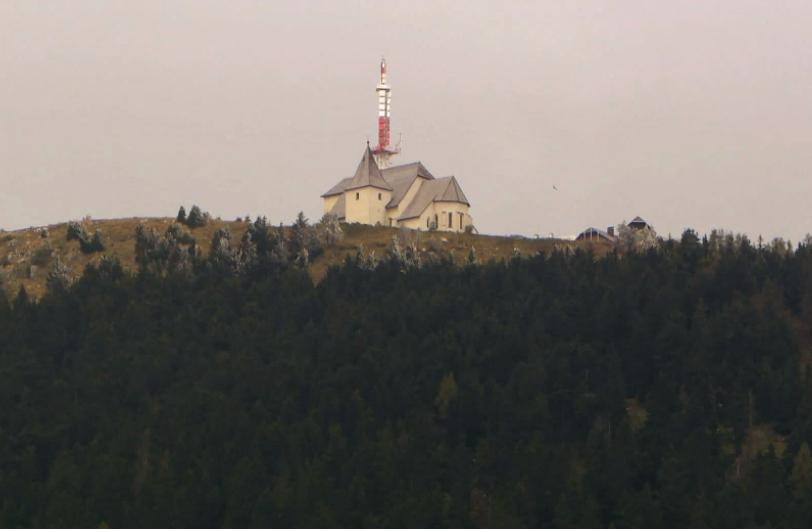
These days, Uršlja Gora is perhaps best known as the site of a major TV transmitter, but this mountain in northern Slovenia has a surprisingly interesting history and a rich variety of plant and animal life. Its spectacular views also make it a popular destination for hikers.
The mountain was named for the Church of St. Ursula, whose altitude, 1978 meters, makes it the highest full-sized church in Slovenia and one of the highest in all Central Europe. Despite its remote location, it is considered one of the finest Gothic churches in the country. Regular masses are held there during the summer season. The mountain and its church are so important to the people of the region that many know Uršlja Gora simply as “Gora” – the mountain. According to legend, St. Ursula left a foot-shaped hole in a local rock, and visitors who place their foot into the gap will have their dreams come true.
The nature of Uršlja Gora is just as interesting. Much of the mountain is covered in forest – a mix of deciduous and evergreen trees. Despite its gentle appearance, the mountain also has limestone and dolomite cliffs, mostly near the top; they have become popular with climbers.
Several rare plants thrive on the slopes of Uršlja Gora; they include Alpine bells and the elusive aconite-leaf buttercup. Among animals, the native black grouse is especially common, as is a mountain sheep known as the mouflon, which was introduced to the area in the 20th century.
The unique natural beauty of Uršlja Gora inspired the late Slovenian artist Karel Pečko, who frequently portrayed the mountain in his art.
While much of Uršlja Gora looks like a natural paradise, the mountain’s appearance has long been shaped by humans. The mining and smelting of disseminated ore was once commonplace on its slopes, and sheep grazing was so extensive that it even lowered the tree line. Solitary farms can still be seen up to an altitude of approximately 1200 meters. These days, the most obvious sign of human presence, besides the church, is a radio and television transmitter built in 1962.
Uršlja Gora is now a part of the Slovenian Mountain Trial, which connects eastern Slovenia with the Adriatic Sea. Because it provides unique vistas across much of northern Slovenia – and as far as Triglav in the Julian Alps if the weather cooperates --, Uršlja Gora is among the most popular stopovers for hikers who choose to explore the mystery and the beauty of Slovenia’s mountains.

































































